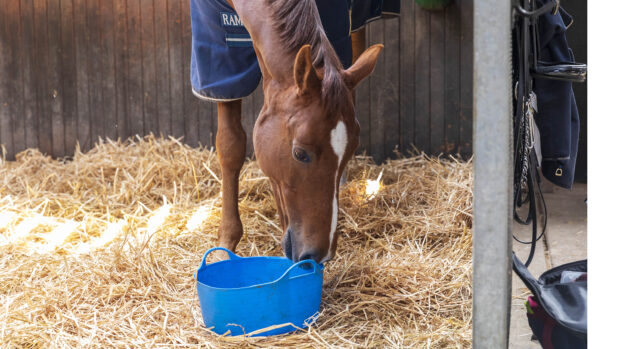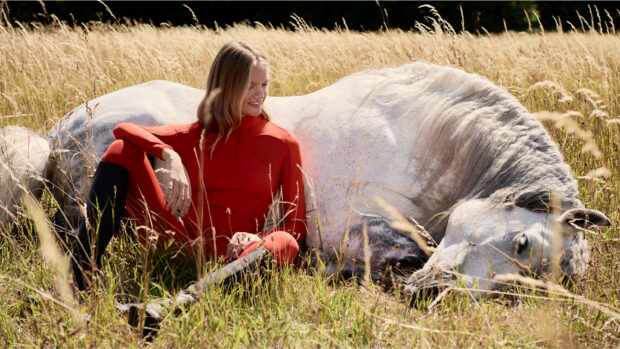Nicknamed the “Grey Ghost” on account of its distinctive silver coat, the Weimaraner is an athletic gundog breed with its roots in German aristocracy. Back in the early 19th century, a German Duke, Karl August of Weimar, developed this pointing-type hunting dog and then kept it exclusively within the nobility, setting up an elite club. If they did sell one to a lucky fan outside the club, it was secretly neutered before the sale!
But by the 1950s the breed had managed to break free from its upper-class German origins and became established on both sides of the Atlantic. The UK Kennel Club recognised the Weimaraner as a breed from 1955, and is has been popular in the show ring, as a family dog and also as an all-round gundog. It was originally bred to hunt big game such as boar, bear and deer, thanks to its large size, athletic ability and strength, but it is has developed into a breed that can work on grouse moors, or at rough or driven shoots, whether beating or retrieving.
Fans of the breed love its majestic appearance. It is handsome, muscular and streamlined, with piercing eyes and a shimmering silver coat. Temperamentally, they are fearless, energetic and protective, and love to form a strong bond with their owner. Their intelligence needs channeling, as it gives them brilliance and a strong will in equal measure. An ideal breed for those who are a sucker for aristocratic good looks, have the patience and experience to carry out consistent training, and the time and energy to enjoy exercising them as they require.

Weimaraner breed: fact file
Kennel Club breed group: gundog
Size: large
Daily exercise: more than two hours a day.
Coat: typically short, shedding. There is a long-haired variety, but it is much less common.

Although the Weimaraner is known for its sleek silver coat, long-haired varieties do exist
Colours: essentially grey, with varieties of mouse, roe and silver grey. Blue or black coats are undesirable. Light-coloured eyes in shades of amber or blue-grey.
Lifespan: more than 10 years.
Bark: a deep, booming bark, not yappy.
History: the Flemish artist Anthony van Dyck painted a portrait of Prince Rupprecht von der Pflaz with a silver-grey hunting dog, which looks much like the modern Weimaraner. However, the official breed has its roots in German aristocracy, where it was bred by the elite as a nobleman’s hunting dog, and strictly kept among the upper classes. However, by the time of World War II, Weimaraners were exported across the Channel and the Atlantic, and it became popular in the UK, being recognised by the Kennel Club in 1955.
Distinctive features: the sleek, silver coat, for which it is nicknamed the “Grey Ghost”. Gives an impression of power, balance and stamina in an athletic and statuesque frame.
Temperament: fearless, protective, obedient and alert.
Things to consider: this is a breed that can be prone to separation anxiety, as they are loyal, protective and love to form a super strong bond with their handler. Learn how to prevent separation anxiety so that you can ensure you have a happy, well-balanced dog in the home.
Weimaraners also have a propensity to chew, so stock up with plenty of robust chew toys so that they don’t help themselves to inappropriate items, whether it’s rocks and sticks from the garden or household items. This can be related to separation anxiety, and there are ways of teaching them how not to chew everything to shreds.
Being a large dog, a large breed puppy food is recommended to ensure they get the appropriate nutrients from a young age.
They thrive on an active outdoor lifestyle, and need consistent training, so assess whether this is really something you can provide before you fall head over heels in love with their aristocratic good looks.
Training: Weimaraners have a strong desire to work and thrive when that energy is channelled. They are not a “beginners’ dog”, with their high energy demands and their size and strength meaning an experienced hand is essential. You will need to work hard training lead work and for them not to jump up, as it’s as lot of dog if they are pulling or pushing you over in a boisterous manner.
Given the breed’s athleticism and boundless stamina, and the fact that they form strong bonds with their human – how about running with your dog, to enjoy your exercise together? Watch out, they are fast – attaining speeds of up to 35mph!

The Weimaraner Handbook
This book answers all your Weimaraner questions and covers essential topics with a breed-specific focus.

The Complete Guide To Weimaraners
Author Vanessa Richie used interviews with nine top Weimaraner breeders to create an in-depth look at what it takes to successfully live with, raise and train a Weimaraner.
You may also enjoy reading…

10 of the most expensive dog breeds in the world – how does your pooch measure up?

25 fabulous facts about dogs

Did you know: a hound is a dog, but not all dogs are hounds

All about the golden retriever

All about the Saluki

Subscribe to Horse & Hound magazine today – and enjoy unlimited website access all year round
Horse & Hound magazine, out every Thursday, is packed with all the latest news and reports, as well as interviews, specials, nostalgia, vet and training advice. Find how you can enjoy the magazine delivered to your door every week, plus options to upgrade your subscription to access our online service that brings you breaking news and reports as well as other benefits.




